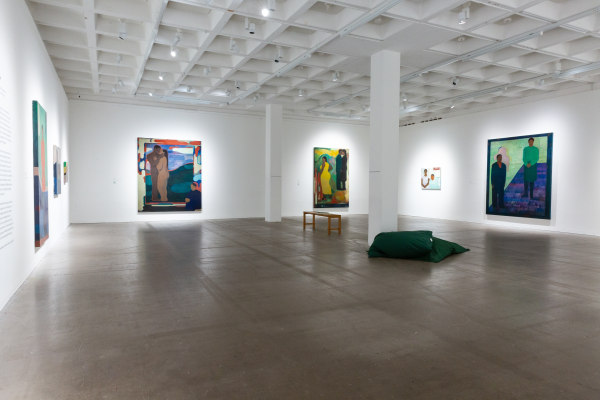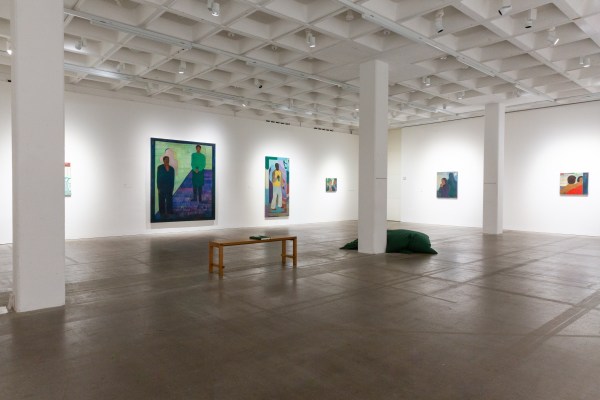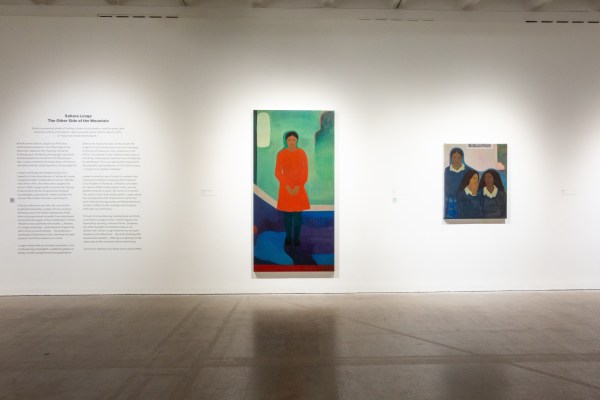Sahara Longe
British artist Sahara Longe’s first institutional solo exhibition opens at Arnolfini this summer. The other side of the mountain presents a new body of work exploring semi-abstract interior worlds, where her paintings capture fleeting moments and memories alongside the multitude of stories that exist within personal experience.
Following her exploration of old family photographs and inspired by Doris Lessing’s pivotal feminist novel The Golden Notebook (1962), Longe creates compositions where dreams intersect with reality. The exhibition weaves together memories from her early childhood in Clapham with contemporary reflections on family, changing circumstances and the nature of remembrance itself.
Varying in scale from intimate portraits to expansive compositions, her imagined scenes invite viewers to move between different emotional registers. Some paintings capture literal memories – the conspiratorial conversations of schoolgirls in woollen jumpers and plaid skirts – whilst others draw from deeply personal references, such as a solitary figure wearing a red dress against a lush green background, inspired by the memory of a heavy, red velvet dress worn in childhood.
Longe’s evocative use of colour stems from her classical portraiture training at Florence’s Charles H. Cecil Studios, where she was restricted to working with just five colours during her first two years of study. This rigorous foundation informed her rich, jewel-like palette that employs Symbolist techniques of subjective suggestion, hovering between real and unreal worlds.
Lessing’s novel profoundly shapes Longe’s approach, particularly its protagonist Anna, who reveals multiple narratives through four coloured notebooks. Much like Lessing’s fifth golden notebook, where these stories converge, Longe creates compositions where past, present and future selves coexist and engage in dialogue.
The Yellow Dress (2025) embodies Longe’s exploration of sexuality and womanhood. Drawing inspiration from German Expressionism and Fauvism, the work captures a tender moment between a couple, representing different facets of the artist’s divided self and offering a glimpse of what might lie on the other side of the mountain.
Working simultaneously across multiple canvases, Longe transforms autobiographical moments through literary and cinematic devices. Figures are often caught mid-action across smaller vignettes, allowing audiences to project their own narratives upon the work. Elsewhere, she employs frames within frames – with decorative qualities inspired by Christian iconography encountered during travels to Norway – positioning characters outside central compositions like narrators hovering at the edge of a page.
Throughout the exhibition, shadows challenge traditional metaphorical interpretations. Rather than representing negative forms, Longe’s shadows offer possibility, functioning as both shadow and reflection to create what Lessing described as “some tiny passing shade of feeling.”







